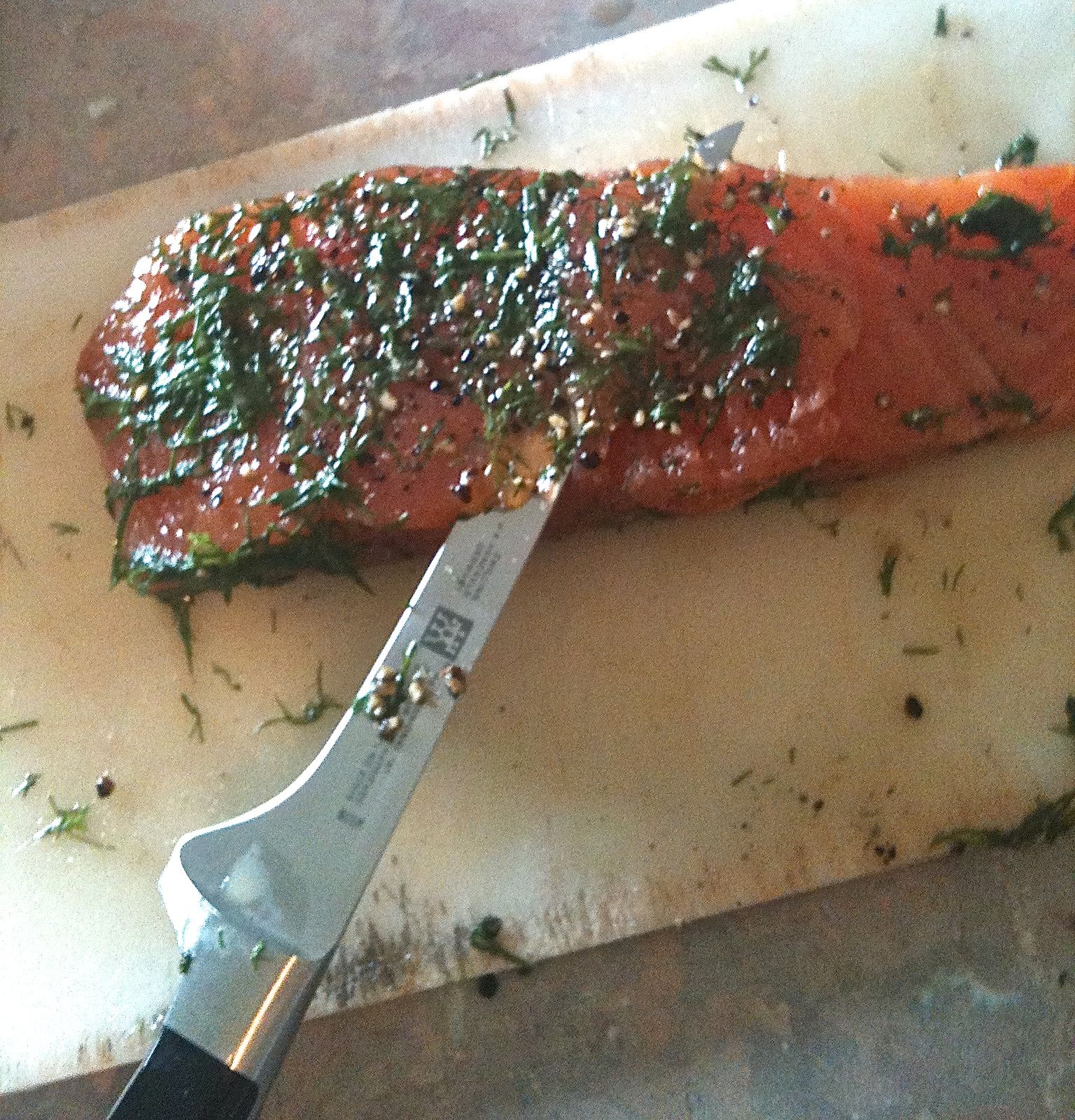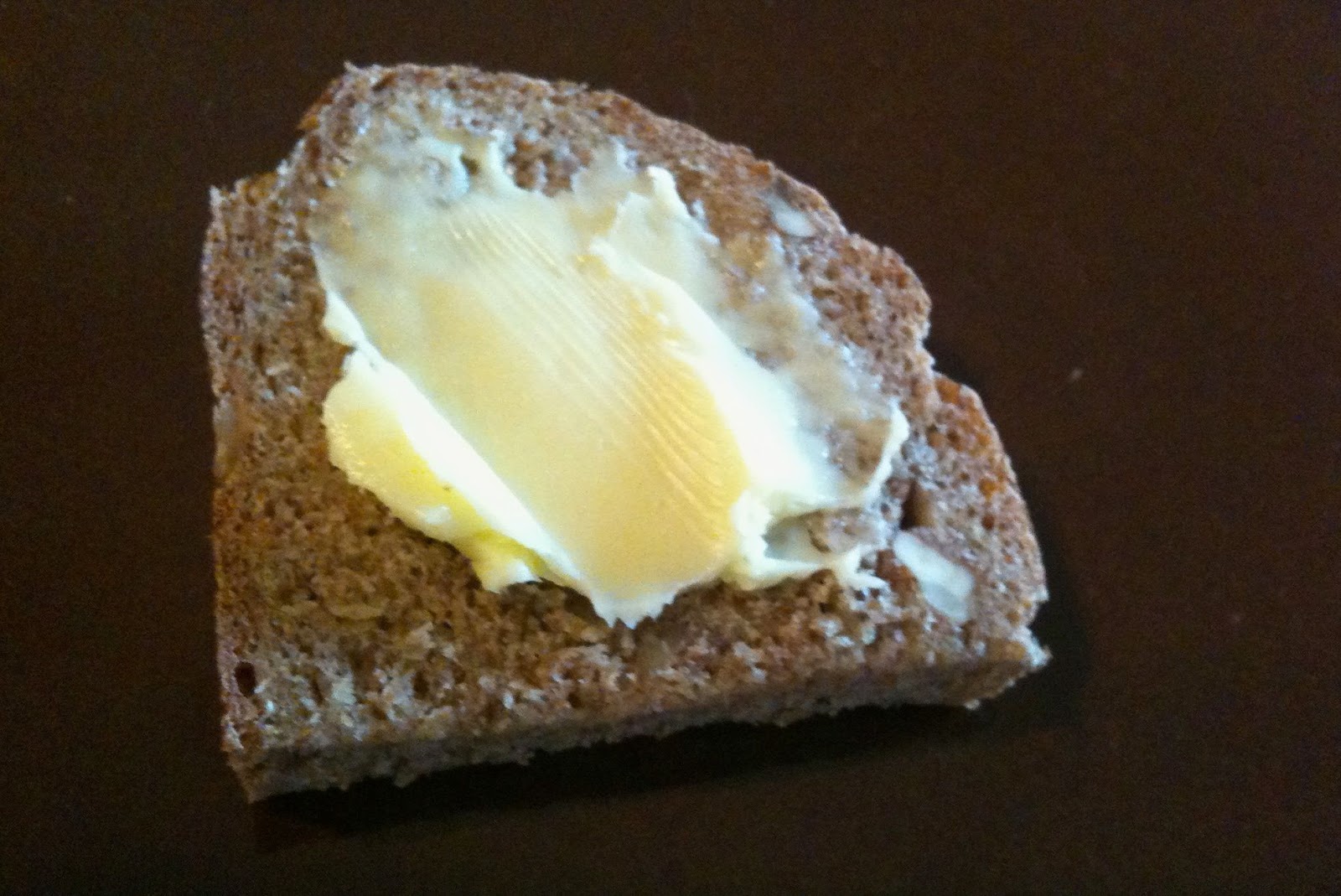 As I am descended from Vikings it is appropriate that my favourite things are white spirits and cured fish. I am not sure why it has taken me this long to think of combining these two amazing things, but anyway I have now, and I've gone and made a vodka-cured gravlax with dill and brown sugar.
As I am descended from Vikings it is appropriate that my favourite things are white spirits and cured fish. I am not sure why it has taken me this long to think of combining these two amazing things, but anyway I have now, and I've gone and made a vodka-cured gravlax with dill and brown sugar.I paired it with home made rye bread (I had to search for hours to find a recipe that didn't require me to start SEVEN DAYS IN ADVANCE WTF??!!).
Making the gravlax made me feel all historic and ancient-y, because every ingredient and process is totally, utterly natural and stone aged. Except for the brown sugar, but apparently you can use honey, which would be a bit more convenient if you were a Viking caveman.
The recipe I used is here, but I would recommend reducing the curing time to 24 hours or less, and using less salt. That's because I had a little chat to the friendly chef at Mako Fresh Fish in North Hobart. This 20-year veteran of gravlax was only too happy to discuss some of the finer points of gravlax curing. It seems that Scandinavian palates are fond of salt whereas Australian palates enjoy a fresher, raw-er taste (think of the influence that Japanese food has on us with its beautiful sashimi, for instance). For a less salty cure, reduce the curing time, reduce the amount of salt and be sure to use a salt that is not too strong - this one was recommended.

So basically you mix salt, brown sugar, pepper and lots of dill, and rub it all over your salmon fillets (see the picture above). Then you pour a good whack of vodka over the whole thing and squish it down with a large heavy rock.
OKAY. You do not need to use an actual rock (although this one from my garden was absolutely perfect and far better than anything else I had - before I found it I was trying to manufacture a suitable weight from jam jars and butter pats).
You could use anything flat and heavy as long as it presses down on the salmon, not on the edge of the dish.
Put it with its weight in the fridge - yes, I know Vikings had no fridges, but honestly they could have just left it on the nearest ice floe - and leave it for 12 hours. When you pull it out to inspect it, it will look like this.
Close up, you'll see the part of the flesh that's been immersed in the curing solution has changed colour slightly, becoming paler (the lower edge in this pic).
The skin of the fillet also becomes really firm and hard, I think from the compression that comes from being weighted down.
Turn the fish over and leave it for another 12 hours to cure the other side. Then take it out of the curing solution - it's ready to slice and eat.
You need a VERY sharp knife. I found it difficult to slice evenly, a bit like trying to slice prosciutto by hand - you want thin slices and it's difficult to maintain the smooth even pressure that you need. Practice helps. I got better.
I managed to get slices that were about 2-3mm thick and fairly straight.
You'd think I altered the colour saturation in this photo, but no. Gravlax really is a stunning, translucent coral pink. It was so beautiful I nearly cried.
I tried to cut whole strips but inevitably I ended up with half-strips and shards. I didn't really mind because I was hypnotised by the wonderfulness of it all.
I was wondering how to present it best. Re-layering the sliced gravlax fillet with its lovely peppery and salty dill crust seemed a good idea.
But you make the most of the colour and texture if you spread it out a bit.
What do you need with gravlax? Not much really. But I did wonder about making some rye bread. I had never done this before.
Let me tell you something. Despite what many cookbooks will imply, life is too short to spend 7 days making a loaf of bread. Yes, 7 days.
Do yourself a favour and use Nigel Slater's recipe which is awesome, easy and has a two-hour turnaround.
Nigel's recipe makes enough for two loaves, which is fine, because rye bread keeps really well and you can go on using it fresh for days and toasting it for up to a week. He put his bread in tins but I wanted to hand shape my loaves and I gave them parallel diagonal scoring marks because I like the way it looks.
If you want to be purist you will of course make your own butter. Yes I do. I make my own butter. Before you scoff at my ridiculously purist attitude, try it sometime. You too may get addicted.

Normally when I cook things, I get to the end of the cooking process and I don't really want to eat anything straight away - it's like the cooking substitutes for eating and takes my appetite away. HOWEVER, I couldn't wait to slice the gravlax and lay it on the rye and sink my little teeth into it.
If you've read this far you must really like gravlax. I admit that smoked and cured salmon is totally awesome and one of the world's best foods, and if you want to see some other things I've done with it, you can have a gawk here. And, being Dr Cupcake, I've even done imitation sushi in cupcake form... which you can see here.
So long for now, all you gravlax-loving Vikings out there. I'm off to sample some vodka. I'd love to say it's top shelf stuff, but the regular quantities required would most likely bankrupt me :)
Love, Dr Cupcake

























